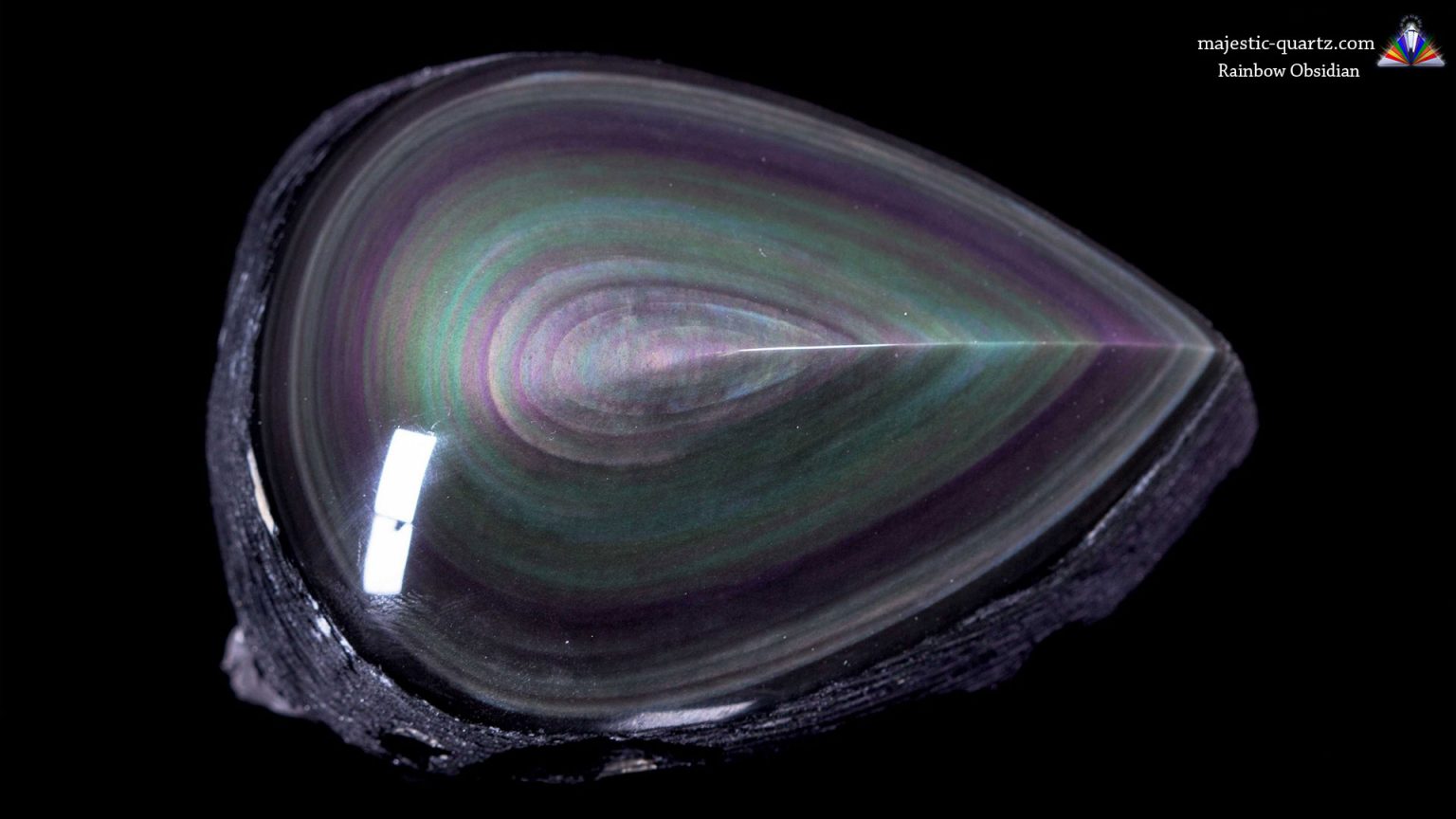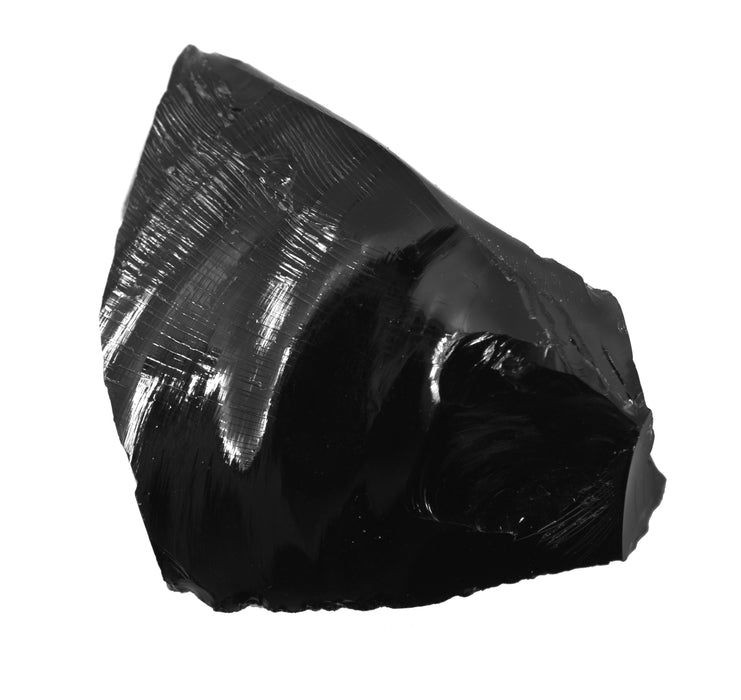
Its sharp edges were a symbol that the darkness could be pierced to reveal the white light of the truth.

Light healers longed for Obsidian and crystal gazers also craved the stone so they could look deeper into the spiritual realms. It was also coveted by shamans, healers, and stone-age spiritualists. But the allure for Obsidian went beyond the basic utilitarian. It was used to make arrowheads and cutting tools and in its heyday, it had more worth than gold. Beloved by the Mayan’s and the Aztecs, Obsidian was used in a multitude of ways – from jewelry to homeware and even weapons. It’s a stone that comes swallowed up in a lot of history. Obsidian can be found across the globe, from the azure shores and fisherman huts of Greece to the ice and fire of Iceland, and the mythical jungles and lost cities of Mexico. It has been around since the beginning of time and has been used in trading by the Mayans since 100 B.C. Obsidian is formed by the quick cooling of volcanic lava in an earthly and scientific way that causes it to harden like glass. But whether you pick the rainbow shade of the velvet crush of night color, all Obsidian stones share that intense healing vibe that is ever ready to pull you back up on your feet again. It’s a stone that knows that one size doesn’t suit all, which is why Obsidian presents itself in a myriad of ways.

Look a little closer and you can see the milky flecks of the soothing Snowflake Obsidian or the gorgeous glimmer of the Golden Obsidian. While some may turn their eyes to brighter stones, the Obsidian is a beautiful stone. Sharp edges symbolic of piercing darkness to find the lightĭark and dreamy, the volcanic glass rock of Obsidian is a sword against negative energy and a powerful anchor for keeping you grounded in this good life.Historically used to make arrow heads and cutting tools.13/48/76), which is better for precise identifying and communicating color.Įnjoy exploring this collection if you’re trying to find out what color a word refers to or if you’re looking for the right word to describe a color. It’s great for poetry and marketing.Ĭontrast this with the numerical language of HSL (i.e. What language lacks in precision it makes up for in expression. The language used to describe color has a long storied history sometimes tied to its method of manufacture and sometimes tied to mental or emotional associations. Learn more in my digital photography and digital printing workshops. One day we may be able to plot various shapes within them to design new color relationships and to more precisely identify the color relationships within existing images.įollow up with Why Painters’ And Photographers’ Color Wheels Differ.

These models are even more informative because they show that color is not spherical but shaped more like a teardrop. You can find virtual 3D color wheels in programs like Apple’s Color Sync which is designed to show and compare the shape of different color spaces or in Chromix’s Color which can also plot an image within the virtual volume.
#OBSIDIAN COLOR PRONOUNCED PLUS#
While sadly it does not offer a three-dimensional model, it offers other two dimensional graphs, including its classic square that plots all permutations lightness and saturation of a single hue plus a side-by-side rainbow slider to change the hue and gives numerical values for a given hue in four different color spaces – HSB, LAB, RGB, and CMYK. In 1989 Albert Henry Munsell created a three-dimensional model of color in the form of a central cylinder graded from black to white surrounded by a ring of possible hues.Īdobe’s Color Wheel (Window > Color), one of the most used color wheels today, advances this tradition by refining the arrangement of complementary hues from subtractive (pigment or dye) to additive (light) ones, making color theory more precise. In 1807 painter Philip Otto Runge reimagined the color wheel as a color sphere by painting a color globe using three primaries plus black and white, complete with cross-sectioning.

Within this color wheel he rotated geometric shapes to identify different types of relationships. (Unsurprisingly, if you spin the color wheel quickly, you’ll see white as the colors blend together.) Newton believed colors shared harmonious relationships with one another and went so far as to assign musical notes to each hue. When he wrote down the different hues he made an influential decision to create a circle by connecting the opposite ends of the spectrum red and violet. Newton used a triangular prism to split a beam of white into a rainbow, proving that light is composed of a spectrum of hues – ROYGBIV. (His theories on light are detailed in his seminal volume Optiks). In 1666 the first color wheel was invented in by Sir Isaac Newton best known for his theories on gravity, motion, and light.


 0 kommentar(er)
0 kommentar(er)
